Extend the life of fresh turnips by dehydrating them. Dehydrate the turnip greens too, if desired, to make a tasty snack.
Selecting Turnips
Turnips are readily available year-round, although the peak season for turnips generally ranges from October through February. For lighter, sweeter flavor, choose small, firm turnips, which are more tender than larger turnips. As they age, turnips typically develop a pronounced cabbage flavor, with an increasingly woody texture.
Baby and smaller turnips usually don't need to be peeled, but you should peel the skin off larger turnips with a vegetable peeler. Trim the greens from the turnips, but don't throw them out. Rinse the greens and use them in sautes, soups and other recipes.
Prepping the Turnips
You can choose from two main prep methods to get the veggies ready for dehydrating. The Ultimate Dehydrator Cookbook recommends boiling whole turnips for 35 minutes, or until they're tender. Transfer the turnips to a bowl of ice water and let them cool before draining them. Slice or cube the cooked turnips.
Alternatively, steam blanch the turnips. Blanching -- or quickly steaming the turnips -- stops the enzymes that break the turnips down, resulting in better preservation and optimal texture. Fill a large pot fitted with a steamer basket with 1 to 2 inches of water. Bring the water to a rolling boil.
Meanwhile, slice the turnips in 1/8-inch thick rounds or strips. Add the turnips to the pot, place the lid on top and let them steam for 3 to 7 minutes, as recommended by Daniel Gasteiger, author of Yes, You Can! And Freeze and Dry It, Too. Once the time is up, transfer the turnips to a large bowl of ice water to halt the cooking process. Let them cool completely.
Dehydrating Methods
Now that you have the veggies ready and prepped, it's time to start dehydrating. Dehydrators, appliances made especially for this task, are widely available at many kitchen stores and online vendors. They work well, but if you don't have one -- no worries. Your oven can get the job done, too.
Using a Dehydrator
Arrange the turnips in even layers in the dehydrator. Set the dehydrator to 125 degrees Fahrenheit and let the turnips dry for approximately 12 hours. You can also dehydrate mashed turnips by spreading them in 1/4-inch strips on the drying sheets that come with the dehydrator.
Using the Oven
Preheat the oven to its lowest setting -- typically 140 to 150 F. Arrange the turnips on baking trays. Optionally, stack the trays if you are dehydrating a large batch. Leave a minimum of 3 inches of clearance at the top and bottom of the oven, and 2 1/2 inches between the trays. Rotate the trays every 30 minutes for even drying. Because the turnips are dehydrating at a slightly higher temperature, they should require less time. Check the turnips every 2 hours for doneness.
Determining When Turnips Are Done
The key for optimal shelf life is to make sure as much moisture is removed from the turnips as possible. Dehydrated turnips should be brittle, but still slightly bendable, with a texture similar to paper. To check the turnips for doneness, Vegetarian Times recommends removing one slice from the dehydrator and cutting it in half. If moisture appears in the cut, return the turnips to the dehydrator or oven to continue drying.
Once the turnips are fully dehydrated, let them cool and transfer them to an airtight container. Store dehydrated turnips in a cool, dark place to prevent heat, moisture or light from compromising the quality.
Related Articles
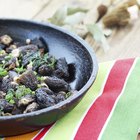
How to Dry Wild Morel Mushrooms
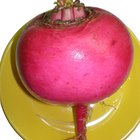
How to Roast Turnips
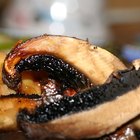
How to Dehydrate Morel Mushrooms
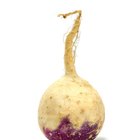
How to Freeze Turnips & Mustard Greens
How Long Does It Take to Dry Apples in ...

How to Store Carrots in the Refrigerator

How to Dehydrate Kiwi

How to Freeze Carrots Without Blanching
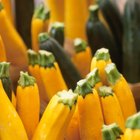
How to Dehydrate Summer Squash
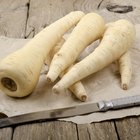
How to Prepare Parsnips

How to Dry Fresh Parsley
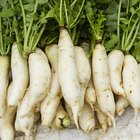
How to Dry Radishes

How to Freeze Cooked Carrots

Can You Steam Turnips?
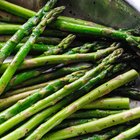
How to Pan Fry Carrots & Asparagus

How to Dry Pineapple in a Dehydrator

How to Preserve Rutabagas

How to Turn Plums Into Prunes

How to Preserve Bell Peppers for Use ...

How to Preserve Chestnuts
References
Writer Bio
Caryn Anderson combines extensive behind-the-scenes writing experience with her passion for all things food, fashion, garden and travel. Bitten by the travel bug at the age of 15 after a trip to Europe, Anderson fostered her love of style and fashion while living in New York City and earning her degree at New York University.